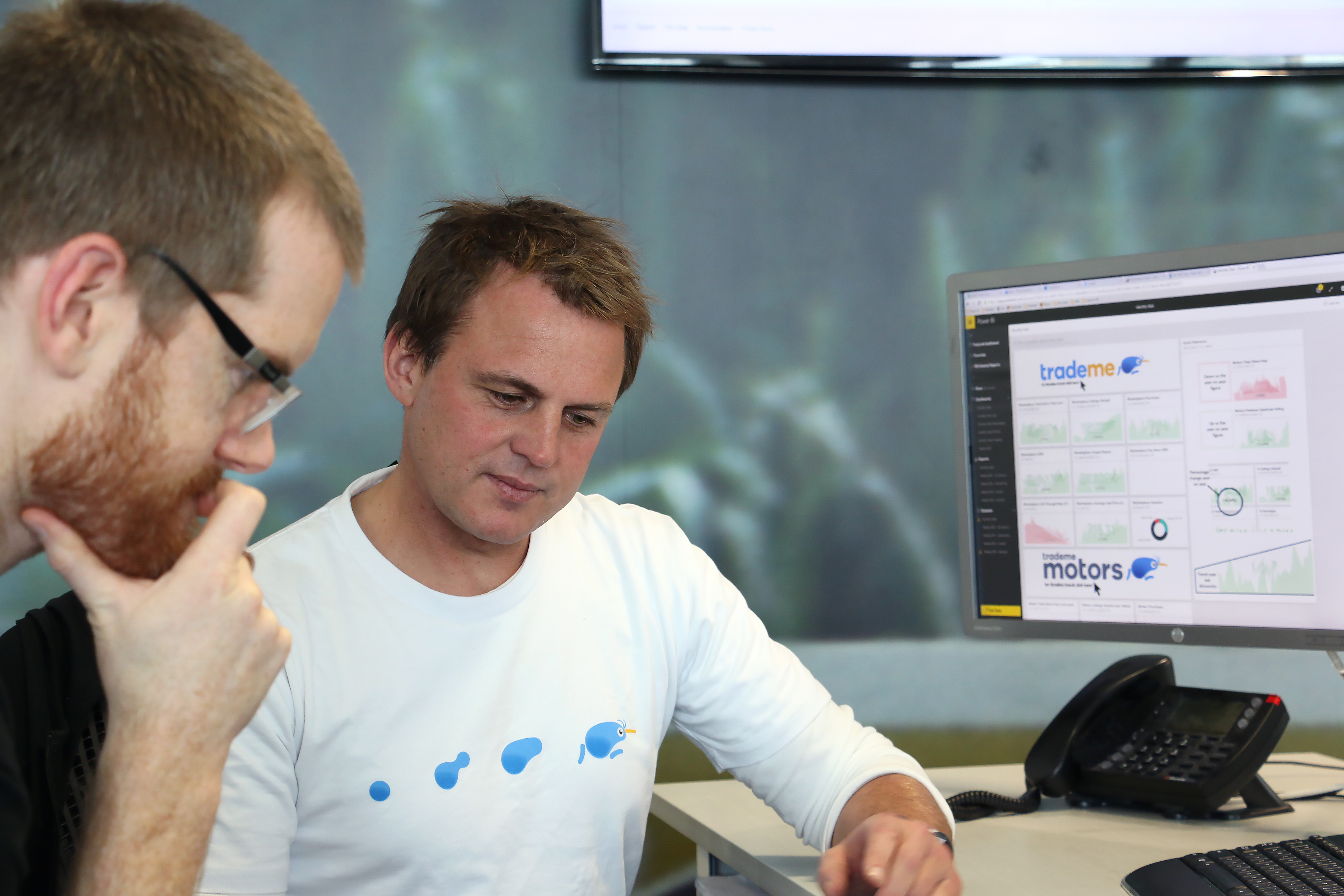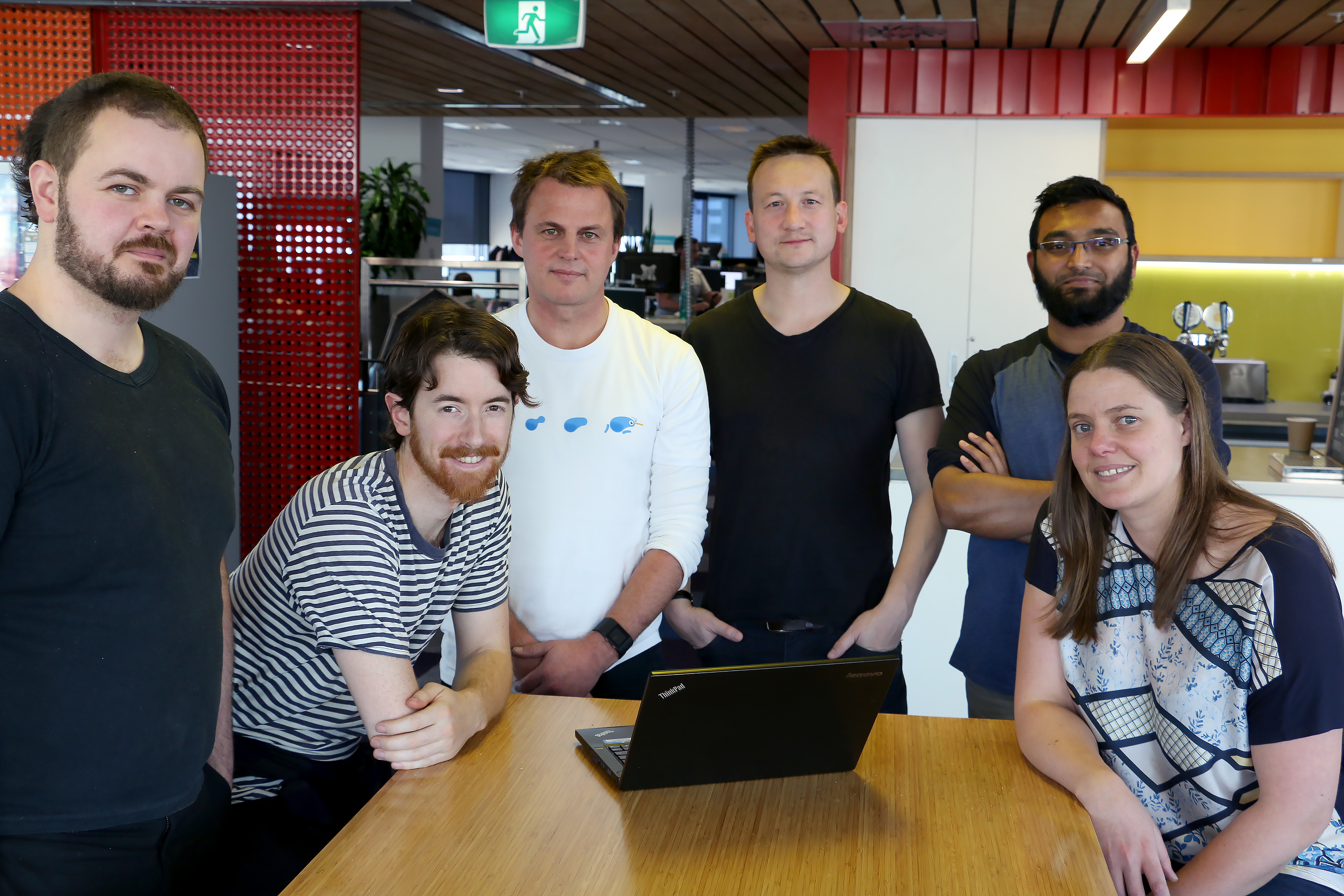In this instalment of our Data Culture Champions in Asia, we look at how Philip Seamark, Senior Business Intelligence Architect at Trade Me, New Zealand’s biggest online classifieds and auction site, makes data easy to use so managers will be empowered to make better business decisions.

With 3.7 million active members generating 60 per cent of the Web traffic originating from New Zealand, Trade Me is today the country’s largest online classifieds and auction site featuring everything from trinkets to houses.
Having grown at an astounding rate since it opened for business in 1999, the company has expanded its staff strength from 50 to approximately 500. As it continues to expand its service offerings, the company now generates a huge amount of data on its users.
However, turning all the various set of numbers into something actionable requires not just the latest data analytics tools but also a culture of people willing and able to take advantage of data.
About two years ago, Trade Me decided to create a small two-person specialized business intelligence (BI) team to make better sense of the data and encourage its use among staff. This BI team is now spearheading the development of analytics models to provide insights into Trade Me’s business.
Data is the New ‘Gold’
Transforming raw data – the new “gold” in the digital economy – into useful business insights has led to important decisions being made at Trade Me.
Increasingly, forward-looking companies such as Trade Me look at data as an incredibly valuable asset for organizations to understanding customers, the market, and growth spots.
A 2014 IDC study[1] identified “financial and productivity benefits directly linked to better data-driven decision making.” These benefits represented a $1.6 trillion opportunity over the next four years for organizations that maximize the value from data. That “data dividend” is 6 percent more than companies can expect if they aren’t getting the most value from their data.
Today at Trade Me, product managers and business analysts responsible for various segments of the business now get a better sense of the performance of each unit. These insights are critical to answering daily questions such as how many sales transactions and new listings are there in a week? How many users are using the site at a certain time? And how do people engage with the Trade Me app on a mobile device, while on the go? Have they put more items on a watch list?
These insights, available at the fingertips of managers who need them, enable them to take action and boost particular segments where needed. They also provide a way to make actionable decisions based on real-time data insights, instead of going merely by gut feel.
Philip Seamark, Senior Business Intelligence Architect at Trade Me, said: “With an ingrained data culture, we make decisions with a clear goal of maximizing the chances of a positive business outcome. One goal of our data journey is to increase profitability, which means we need to help our staff make the best possible business decisions at the right time.
“One of Trade Me’s core company values is to ‘decide and act on merit’, so we take the task of using this data in a meaningful but responsible way seriously.”
For an online classifieds and auction website, it is important for our managers not only to have a view of historical customer activity, but also to be able to predict customer needs to keep the website constantly relevant.
Creating a Data Culture
To fully harness data, Trade Me has invested in building an analytical workforce, where talents have the ability to ask the right questions, analyze data and drive actionable insights. This is an important attribute of a company with a successful data culture.

84 per cent of business leaders in Asia agree that it is important to have a data-savvy workforce, one that is aligned, equipped and trained to extract value from data, according to the Microsoft Asia Data Culture Study released in May 2016. However, only 42 per cent of those polled felt that they have employees who have relevant skills to analyze and identify new business outcomes.
This was what Trade Me sought to address as well. Before they set up the BI team, there was no direct management of data flows, said Seamark. The effort was ad hoc because the company was much smaller in the past, he noted.
Today, with all 500 employees both creating and using data, Trade Me’s user data has to be managed and curated to ensure a single source of truth. A seemingly mundane process, this means finding the various sets of data from different sources and reconciling them to make sense of it. Even something as simple as an address can take time to confirm and correct, if there are conflicting versions of it.
Seamark provided three reasons why Trade Me has successfully implemented a modern data culture:
1. The Right Tools for Different Users
The ability to provide the right data tools to different types of users is an important factor in encouraging the use of data in Trade Me. The company has partnered with Microsoft to cater to two different groups of users – the data geeks who want to dig deep into the numbers and the less-technically inclined who prefer a quicker and more visual way to make sense of data.
Those in the company who are more familiar and confident with data access methods may choose the more technical tools available to them. They turn to Microsoft Excel often to produce their data points for interpretation.
Users who prefer a less technical, more graphical interface, get an easier-to-use option via Microsoft Power BI, which is a cloud-based business analytics service.
Providing the staff with the right tools has helped encourage users to take to data as a key decision making tool, said Seamark.
2. Empowerment from the Start
Key to a data culture is making it conducive for staff to be comfortable with BI tools from the start. As the company expanded its staff strength from 50 to 500, there is an emphasis for newcomers to be trained from day one to use the BI tools available to them.
Since everyone is coming to Trade Me with different skill levels, the company also caters the training to match what they require for their jobs. There is even one-on-one training for those who need a deeper set of skills in data. At the same time, follow-ups are conducted so staff consistently brush up their skills. This is one way to make sure the data culture sticks, said Seamark.
Interestingly, Seamark shared that age is only a number when it comes to embracing data as younger staff face the same challenges as older ones.
What’s also critical is that Microsoft’s data tools today are built with mass usage in mind. Seamark added: “It used to be a lot harder to use data tools, but the bar has come down now so more staff can adopt a data-driven approach to their work. Simplicity is key here.”
3. Having Data Champions
Having a strong mandate from senior management is key to the BI team’s success in implementing a data culture. What’s equally important is the team’s bottom-up approach to creating a data culture change.
In addition to sharing BI tools and skillsets directly with staff, the BI team members work closely with business analysts across all departments, where they become ‘Data Champions’ to their respective departments in advocating data tools usage and transferring of skillsets.
Data Agility Drives Growth
Today, the use of the BI is regularly monitored across the company. This way, the management can see how and how often the tools have been used. In a way, it is a measure of how deep the data culture has permeated Trade Me.
In addition, Trade Me’s BI team is currently working with Microsoft to explore Predictive Analytics capabilities, where data can help predict business opportunities and challenges. That puts Trade Me at the cutting edge of data analytics, and definitely ahead of its competition in New Zealand.
Seamark today is working towards expanding new data capabilities. Every three weeks, the BI team discusses what they are adding to or changing on the BI platform. They also communicate the changes carried, as part of an agile process that prioritises on-the-fly development to meet business needs.
Seamark feels that Trade Me’s data journey has only just begun. “Our core BI team works closely with the business, and almost every week there’s a new requirement to help drive business outcomes. As a team, we’re aware of the importance of our work in making sure that Trade Me continues to grow strongly.”
In our Data Culture Champions in Asia series, we profile senior executives across the region who have driven a new data culture within their organization by adopting new processes, technologies as well as enabling their people with skill sets. These individuals cut across key industries and organization sizes, but what makes them stand out above the rest is how they are embracing change. Read more stories of our Data Culture Champions in Asia here.
[1] Capturing the $1.6 Trillion Data Dividend,” by Dan Vesset, Henry D. Morris, and John F. Gantz, May 2014




